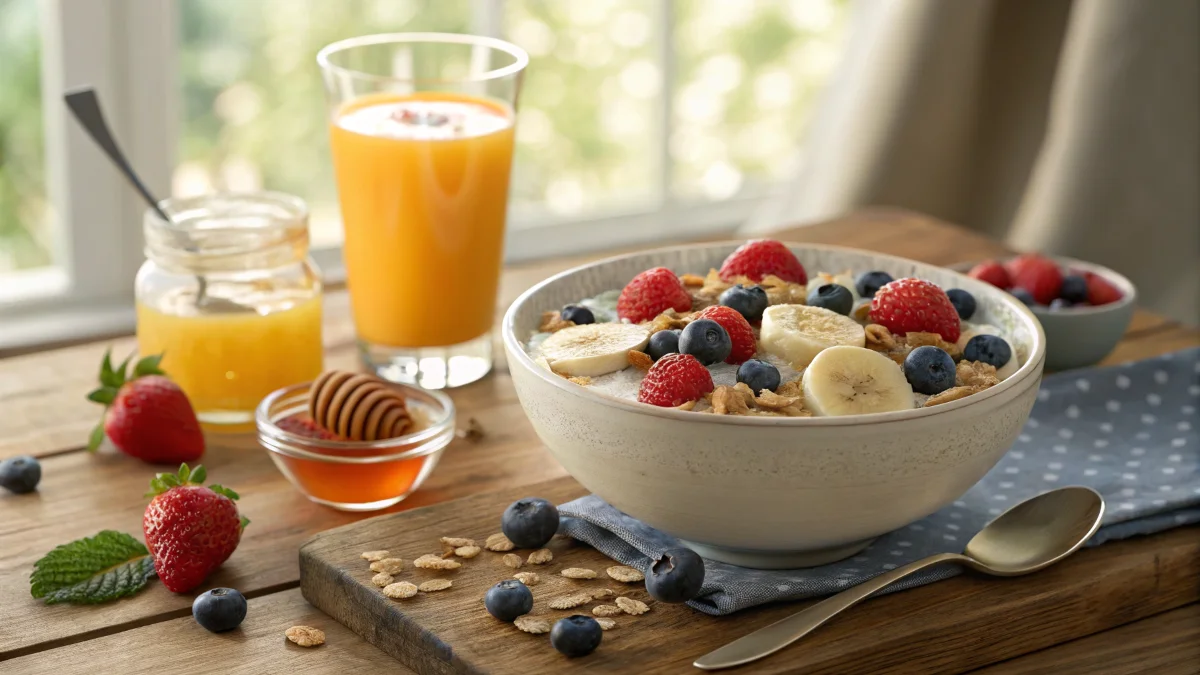Breakfast cereals are a quintessential morning meal, loved for their convenience, taste, and versatility. From their humble beginnings as health foods to the modern-day supermarket aisles filled with countless options, breakfast cereals have become a global phenomenon. This guide explores their history, nutritional value, various types, and tips for choosing the best option to suit your dietary needs.
As versatile as breakfast cereals are, they share similarities with other iconic dishes that have stood the test of time. For example, exploring Biscuits and Gravy: American Tradition, Culture, and Tips for Perfection offers insights into another beloved morning tradition rooted in history and culinary ingenuity.
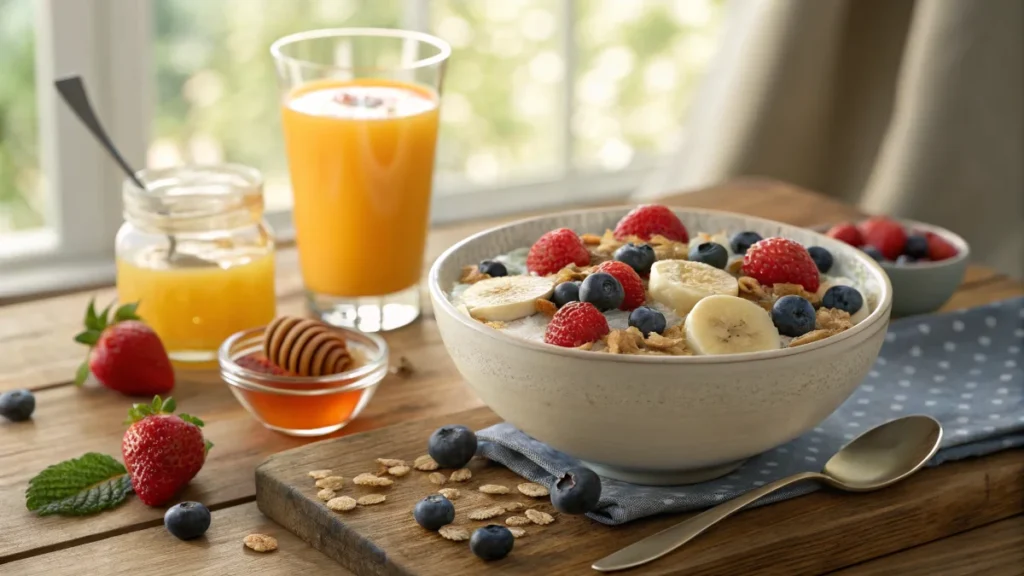
Table of Contents
The History of Breakfast Cereal
Early Beginnings of Cereal
The history of breakfast cereal dates back to the 19th century when Americans sought lighter alternatives to traditional heavy breakfasts of meat, eggs, and bread. This shift was largely influenced by health reformers like Dr. John Harvey Kellogg, a Seventh-day Adventist and advocate for vegetarianism. Kellogg, along with his brother Will, developed cornflakes in 1894 as a digestible and nutritious food for patients at their sanitarium in Michigan.
Before the Kellogg brothers, another pioneer, James Caleb Jackson, introduced the first ready-to-eat cereal called “Granula” in 1863. Granula was a coarse, dense grain product that required soaking before consumption. Although it wasn’t an instant hit, it set the stage for the evolution of cereal as a convenient breakfast option.
How Cereal Became a Breakfast Staple
Cereal became a breakfast staple during the industrial revolution when urbanization demanded quicker and easier meal options. By the early 20th century, companies like Kellogg’s and Post had commercialized cereal, creating products that appealed to a broad audience. The simplicity of pouring cereal into a bowl and adding milk resonated with busy families.
The advent of pre-packaged, ready-to-eat cereals marked a turning point in breakfast habits. Mass production, improved packaging, and distribution networks made cereal accessible and affordable. By the 1940s, cereal was no longer just a health food; it was a daily ritual.
The Role of Marketing in Cereal Popularity
Marketing cemented cereal’s place at breakfast tables worldwide. In the mid-20th century, companies used colorful packaging, catchy slogans, and mascots like Tony the Tiger to captivate kids, while parents were reassured with claims of added vitamins. Today, brands cater to health-conscious consumers with organic and low-sugar options, ensuring cereal’s lasting appeal.
Similarly, understanding What is the Secret to a Good Biscuit? Essential Tips for Perfect Biscuits emphasizes how quality and technique define timeless food traditions.
Nutritional Insights into Breakfast Cereal
Essential Nutrients in Breakfast Cereals
Breakfast cereals often serve as a significant source of essential nutrients. Many are fortified with vitamins and minerals, such as iron, folic acid, and vitamin D, which are crucial for overall health. Whole-grain cereals, like oats and bran, are rich in fiber, aiding digestion and promoting heart health. Additionally, cereals made with seeds, nuts, or dried fruits offer a boost of healthy fats, antioxidants, and protein.
The nutritional content of cereals varies widely depending on the type. Whole-grain options provide complex carbohydrates, which are digested slowly, offering sustained energy throughout the day. On the other hand, refined cereals may lack fiber but are often fortified to compensate for nutrient loss during processing.
Comparing Whole-Grain vs. Refined Cereals
Whole-grain cereals retain all parts of the grain kernel: the bran, germ, and endosperm. This means they are packed with fiber, magnesium, and other nutrients. Examples of whole-grain cereals include oatmeal, shredded wheat, and bran flakes. These options are not only filling but also support weight management and lower cholesterol levels.
Refined cereals, like cornflakes or puffed rice, undergo processing that removes the bran and germ. While this improves shelf life and texture, it also strips away key nutrients. To address this, many manufacturers fortify refined cereals with vitamins and minerals. However, these products are often lower in fiber and can cause rapid spikes in blood sugar.
Evaluating the Sugar Content in Popular Brands
One of the biggest nutritional concerns about cereals is their sugar content. Many popular brands targeted at children contain high levels of added sugars, which can contribute to obesity and other health issues. For instance, cereals like Frosted Flakes and Lucky Charms often have more than 10 grams of sugar per serving.
However, healthier options are available. Brands like Cheerios and Kashi offer low-sugar or sugar-free alternatives that still taste great. Reading nutrition labels and choosing cereals with less than 5 grams of sugar per serving can help you make better choices.
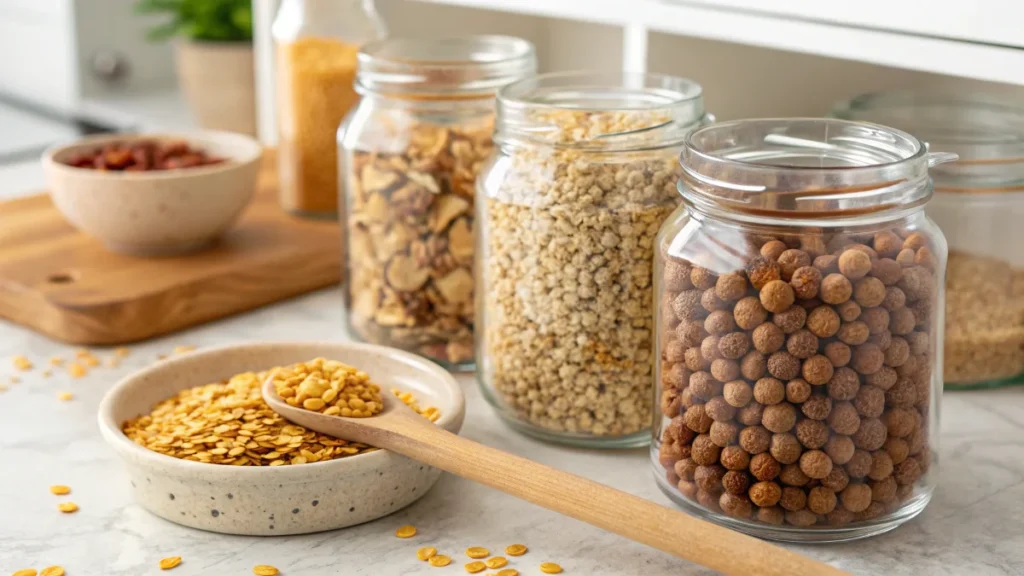
Types of Breakfast Cereal
Ready-to-Eat Cereals
Ready-to-eat cereals are the most common type, requiring no preparation beyond adding milk. These cereals come in various forms, including flakes, puffs, and clusters. They’re known for their convenience and variety, catering to different tastes and preferences. Popular examples include Corn Flakes, Rice Krispies, and Special K.
Hot Cereals: Oatmeal, Porridge, and More
Hot cereals are a comforting choice, especially in colder months. These include oatmeal, cream of wheat, grits, and rice porridge. Unlike ready-to-eat options, hot cereals require cooking with water or milk. Steel-cut oats, rolled oats, and instant oats are popular varieties, each offering unique textures and flavors.
Hot cereals are not only versatile but also highly customizable. Adding fruits, nuts, or sweeteners like honey allows you to create a nutrient-packed meal tailored to your preferences.
Organic and Gluten-Free Options
With growing dietary awareness, organic and gluten-free cereals are now highly sought after. Organic cereals, free from artificial additives and GMOs, appeal to health-conscious consumers. Gluten-free options, using grains like rice, quinoa, or millet, cater to those with gluten intolerance or celiac disease. Brands like Nature’s Path and Bob’s Red Mill lead in providing these nutritious, flavorful alternatives.
Understanding why certain preparation methods enhance foods can be insightful, as seen in Why Do You Soak Sweet Potatoes Before Baking? Science & Tips Explained, which explores simple practices for better results.
Choosing the Best Breakfast Cereal for Your Diet
Best Cereals for Weight Loss
If you’re looking to lose weight, focus on cereals high in fiber and low in calories. Options like bran flakes, plain oatmeal, and shredded wheat are excellent choices. These cereals are filling, helping you stay satisfied until your next meal. Avoid cereals with added sugars or artificial flavors, as they can derail your weight-loss efforts.
High-Protein Options for Fitness Enthusiasts
For those with active lifestyles, high-protein cereals are a great way to start the day. Products like Kashi GoLean or protein-enriched granolas provide the necessary protein to fuel workouts and aid muscle recovery. Pairing these cereals with Greek yogurt or almond milk can further boost protein content.
Kid-Friendly Cereals with Nutritional Benefits
Kids are often drawn to sugary cereals with colorful packaging and fun shapes. While these options may be tempting, parents can choose healthier alternatives like Cheerios, Weetabix, or whole-grain granola. Adding fresh fruits or nuts to these cereals can enhance flavor and nutrition, making breakfast both enjoyable and healthy for children.
Benefits of Eating Breakfast Cereal
Kickstarting Your Day with Energy
Breakfast cereals are a quick source of energy, providing the carbohydrates needed to fuel your body and brain. Whole-grain options release energy slowly, keeping you alert and productive throughout the morning.
How Cereal Supports Digestive Health
Cereals rich in dietary fiber, such as bran or oats, promote digestive health by preventing constipation and supporting gut bacteria. Consuming fiber regularly can also lower the risk of developing chronic conditions like heart disease and diabetes.
Convenience and Versatility
The simplicity of cereal makes it a favorite for busy mornings. Whether enjoyed with milk, yogurt, or on its own as a snack, cereal adapts to various lifestyles. Its versatility also allows for creative recipes, such as smoothie bowls or granola bars, adding variety to your meals.
Popular Breakfast Cereal Brands
From long-established industry giants to innovative newcomers, breakfast cereal brands cater to diverse tastes and dietary preferences. Here’s a closer look at some of the most popular names in the cereal aisle.
Iconic Brands That Shaped the Market
Kellogg’s, Post, and General Mills are among the oldest and most recognized cereal manufacturers. Kellogg’s Corn Flakes, Post’s Raisin Bran, and General Mills’ Cheerios are classic staples that have been around for decades. These brands continue to innovate with new flavors and health-focused offerings.
Top-Rated Healthy Cereal Brands
For health-conscious consumers, brands like Nature’s Path, Bob’s Red Mill, and Kashi provide organic, whole-grain, and gluten-free options. Nature’s Path specializes in eco-friendly packaging and sustainable ingredients, while Kashi offers high-protein and fiber-rich cereals tailored for active lifestyles.
Bob’s Red Mill focuses on minimally processed cereals like steel-cut oats and muesli, appealing to those who prefer simple, wholesome breakfasts
Emerging Brands with Unique Offerings
Recent years have seen a surge of innovative cereal brands catering to niche markets. Magic Spoon, for example, offers low-carb, high-protein cereals marketed toward keto dieters. Similarly, Catalina Crunch provides grain-free, sugar-free options that appeal to people with specific dietary needs.
These emerging brands emphasize clean ingredients and bold flavors, making them an exciting addition to the cereal industry.
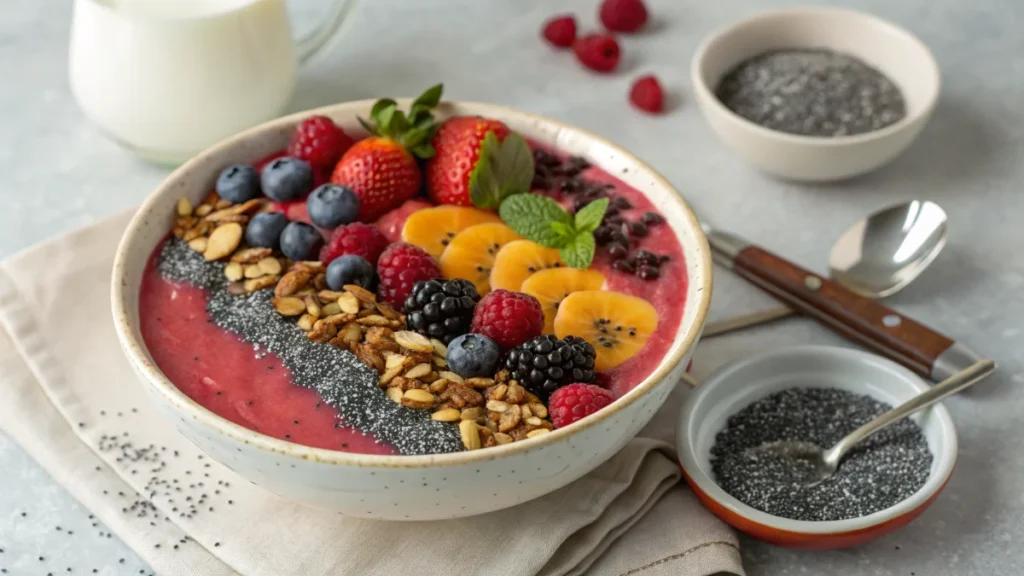
Controversies and Myths About Breakfast Cereal
Despite its widespread popularity, breakfast cereal has not been without its share of controversies and misconceptions. Let’s debunk some common myths and explore the debates surrounding this staple food.
Debunking Common Myths
One common myth is that all cereals are unhealthy. While many sugary cereals contain empty calories, there are plenty of nutritious options made with whole grains, low sugar, and natural ingredients. By reading labels carefully and choosing cereals with minimal processing, you can enjoy a healthy breakfast.
Another misconception is that cereals are only suitable for breakfast. In reality, cereals can be enjoyed as a snack, dessert topping, or even as part of savory recipes, such as breading for chicken.
The Sugar Debate
The sugar content in cereals has long been a concern, especially for products marketed to children. Critics highlight the link between sugary cereals and childhood obesity. In response, many brands now offer reduced-sugar or sugar-free options. To make healthier choices, opt for cereals with less than 5 grams of sugar per serving and whole-grain ingredients.
Like selecting healthier cereals, understanding Why is brioche good for French toast? reveals how ingredient quality impacts nutritional and culinary outcomes.
GMO and Additive Concerns
Genetically modified organisms (GMOs) and artificial additives are also points of contention in the cereal industry. Many consumers worry about the long-term health effects of consuming GMOs and synthetic flavors or colors. To address these concerns, some brands have introduced organic, non-GMO certified cereals.
Reading labels and researching brands can help you make informed choices if these issues are important to you.
Breakfast Cereal Around the World
While breakfast cereal is often associated with Western diets, its appeal extends globally, with each region adapting it to local tastes and traditions.
Unique Cereal Traditions in Different Cultures
In Asia, cereals are often rice-based and served as porridge or congee. For example, China’s traditional rice porridge can be sweetened or paired with savory toppings like pickled vegetables and meats. Similarly, in India, flattened rice (poha) is cooked with spices and vegetables for a flavorful breakfast option.
Popular Regional Varieties
Europe is known for muesli, a mixture of oats, nuts, and dried fruits that originated in Switzerland. Unlike sugary cereals, muesli is often enjoyed with yogurt or milk for a nutritious and filling breakfast.
In South America, quinoa and amaranth are used to make cereals that reflect the region’s ancient grain traditions. These options are often blended with local fruits or honey for a naturally sweet flavor.
How Cereal Is Adapted to Local Tastes
Cereal brands often tailor their offerings to suit local preferences. In Japan, matcha-flavored cereals are highly popular, while in the Middle East, varieties infused with dates, figs, or cardamom are favored. These regional adaptations highlight cereal’s versatility and global appeal.
Similarly, exploring unique recipes like Banana Cottage Cheese Pancakes showcases how diverse ingredients can transform simple dishes into cultural favorites.
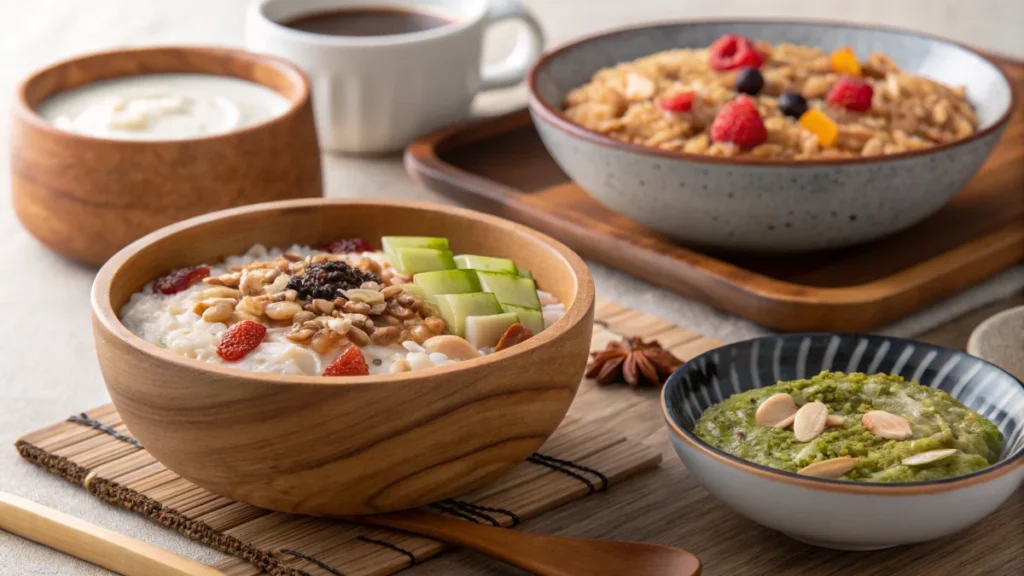
FAQs About Breakfast Cereal
- What is the Top 10 Best Cereal?
- The top 10 best cereals vary by taste, nutrition, and popularity, but here are some widely loved options:
- 1. Cheerios
- 2. Frosted Flakes
- 3. Special K
- 4. Raisin Bran
- 5. Cinnamon Toast Crunch
- 6. Honey Nut Cheerios
- 7. Lucky Charms
- 8. Wheaties
- 9. Shredded Wheat
- 10. Kashi Go
- The top 10 best cereals vary by taste, nutrition, and popularity, but here are some widely loved options:
- What is the Oldest Breakfast Cereal?
- The oldest breakfast cereal is Granula, invented by Dr. James Caleb Jackson in 1863. It was made of whole grain wheat and baked into hard biscuits, intended as a health food for people with digestive issues.
- Which Cereal is the Healthiest?
- The healthiest cereals typically feature high fiber content, minimal sugar, and plenty of whole grains. Some top picks include:
- Kashi Go
- Fiber One
- Nature Valley Crunchy Granola
- Cheerios
- Special K Protein
- The healthiest cereals typically feature high fiber content, minimal sugar, and plenty of whole grains. Some top picks include:
- What is the Best Breakfast Cereal to Eat in the Morning?
- The best cereal for breakfast should balance taste and nutrition. A healthy option would include:
- Oats (e.g., Quaker Oats)
- Shredded Wheat
- Whole grain cereals (like Kashi)
- Cheerios (great for heart health)
- Raisin Bran (high in fiber)
- The best cereal for breakfast should balance taste and nutrition. A healthy option would include:
For a fulfilling and nutritious start to the day, try selecting cereals with high fiber, low sugar, and whole grains to help maintain energy levels and support overall health.
Conclusion
Breakfast cereal is a timeless choice for busy mornings, celebrated for its convenience and adaptability. From whole-grain classics to gluten-free innovations, it caters to diverse dietary preferences. By choosing options with wholesome ingredients, you can enjoy a healthy, satisfying start to your day. Whether enjoyed with milk, yogurt, or fruit, cereal remains a reliable and customizable staple.
Much like cereals, exploring creative foods like What Are Bubble Waffles Made Of? highlights how simple ingredients can transform into delightful and versatile dishes.

